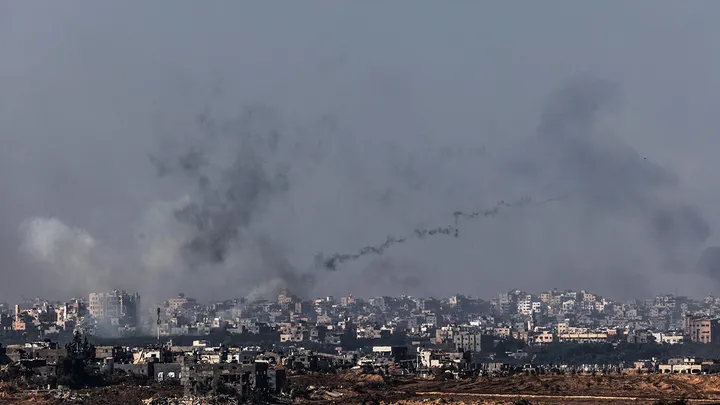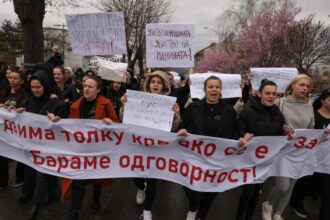Since the horrific Hamas terror strike on October 7, the Israeli city of 35,000 people has been mostly deserted.
A rabbinical institution in southern Israel has reopened for business.
Prior to the Oct. 7 Hamas bombings, the Max and Ruth Schwartz Hesder Yeshiva in Sderot was home to approximately 300 college-age males and a smaller female cohort studying religious education. While there are numerous such schools around Israel, this one is unique in that it not only gives traditional Jewish instruction, but also time to complete one’s military duties to Israel.
The yeshiva’s halls and dormitory have been deserted. Since the day of the attacks, it has matched the emptiness of Sderot.
“I got to walk around a little bit more last week,” the school’s public relations director, Rabbi Ari Katz, says on the “FOX News Rundown – Evening Edition” podcast. “[It] used to be a city, which is a vibrant city that’s alive with 35 to 36,000 people.”
The city is still mostly deserted. A few supermarkets have reopened. But the bustle is gone, except for the yeshiva students who are returning to their studies. They had been housed by another school in another location for the past two months. They are now returning, and the yeshiva hopes that this will convince the rest of the city’s people to do the same.
“Maybe that when they see that the yeshiva’s here, over 300 boys are here back now in the middle of the city, maybe that will have some type of ripple effect.”
Sderot’s western boundaries are only a few thousand feet from the Gaza Strip’s northeast corner. It’s only a few miles beyond that border to the now-infamous Jablalia, where the IDF had been engaged in some of the deadliest fighting of the now-month-long battle. While not as severely damaged as the kibbutz farms and the Nova music festival, Hamas militants were prowling the streets of Sderot looking for targets.
“One basic difference between the war now, and all the previous rounds of fighting the last 22 years or so, is that the city of Sderot, in a way, got used to living under rocket fire,” Katz said. “It’s terribly unfortunate to say this, but they became accustomed to the rocket fire. And what changed on October 7 was that, in addition to the rocket fire, tens of terrorists entered the city.”
Saturday was the Jewish Sabbath, also known as Shabbat. It’s a weekly day of prayer and relaxation. It also coincided with Simchat Torah, a Jewish holy day in which the cycle reading of the Torah is completed and restarted. The holy day brought a number of alumni to campus that weekend, including former students on active duty with the IDF who had brought their guns with them. They had no idea how much they would need them. Alumni and present students emerged from the security of the yeshiva’s walls to confront their adversaries.
“They just took their guns if they had a gun,” Katz wonders. “Even if they didn’t have guns, they just went down.” They were well aware that there was a problem. They collapsed.”
Katz can’t image how different their day might have turned out if the soldiers and kids hadn’t been prepared.
“Because having those guns at least gave us the assurance that if, God forbid, they had [confronted] a terrorist, we had enough firepower to at least give them a fight.” We even had rabbis and students who had joined the fight in the city. One of our rabbis is a physician. He proceeded to join the fighting and save the wounded, and he was severely injured. Thank God, he’s okay. So, in a way, having the soldiers here was critical.”
But bravery does not come without fear. There were also students who were scared. Katz and the other staff members would subsequently discover a note scribbled on a dorm room wall. The statement would send chills up anyone’s spine.
“It basically said, ‘We don’t know if we’ll survive.'” We adore each and every one of you. And we wish you success.’ It was almost like a farewell message because they had no idea what was going to happen.”
Katz believes that the rest of Sderot’s people will take longer to return. Even if the IDF has taken control of Gaza for the time being, there is still apprehension about living near it. However, he sees the yeshiva as playing an important role in restoring normalcy to the city, even if normalcy is something new.
“Because the yeshiva has been around for 28 years, we’ve always been here for the people of the community, in good and bad times.” We can see our part now, and we’ll have to help. And we want to aid the folks when they return. The government will assist in the rebuilding process, as will the city. I’m talking about the spiritual and emotional rehabilitation. The yeshiva sees itself as playing a critical role in this entire process.”















